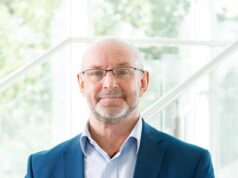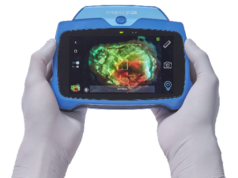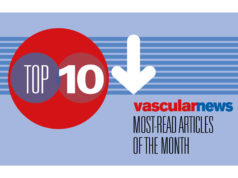
The impact of chronic wounds—a global “healthcare problem”—is felt by patients and the medical community, yet there is limited education on the management of wounds and no standard training programme currently in place. Karen Imma Gellada, a member of the American College of Wound Healing and Tissue Repair (ACWHTR), explains wound care’s “long, arduous road” to specialisation and the current status of a proposed wound healing and tissue repair fellowship.
Chronic wounds have been increasing in the past years, affecting around 6.5 million patients and especially the elderly population.1 In the USA alone, 3% of individuals over 65 years old have an open wound.2 From 1993 to 2003, the number of pressure ulcers in hospitalised patients has increased by 63%,1 and the prevalence of venous ulcers in the USA continues to be about 600,000 annually.3
With diabetic persons having a 15–25% risk of developing neuropathic ulcers, the number of diabetic foot ulcers has climbed with the rising incidence and prevalence of the disease.4 Unfortunately, with an ageing population and higher rates of diabetes, hypertension, obesity and other chronic illnesses, these numbers will continue to increase. In the same regard, acute wounds—particularly surgical and traumatic wounds, abrasions or superficial burns—are also on the rise, emphasising the need for post-surgical wound care as well as emergency and calamity care.5 All of these issues translate to the increased cost of health care, decreased productivity, lost wages and poor quality of life for the patients.
Despite the threat imposed by chronic wounds to public health and the economy, its importance has been overshadowed by other major health concerns. Research funding for the study of chronic wounds is very low compared to its overall impact as a healthcare problem4 and wound education has not kept up, despite advances in wound dressings and the development of various wound technologies.
In the USA, wound education in medical schools is limited to two to three hours on the physiology of tissue injury and wound healing,6 and there is no consensus for the minimum education needed to become a wound expert. There have been multiple wound care societies with “certifying examinations” to become wound “certified”, but no standard training programme. At present, wound care has not been officially recognized as a medical “specialty” by the American Medical Association (AMA) and the American Board of Medical Specialties (ABMS).7
It is globally understood that safe patient care of a high quality can only be provided if doctors are well trained. Inappropriate wound management is further associated with unfavourable outcomes and higher treatment costs, as well as prolonged suffering for the patient. Answering the call to further elevate the standards of wound education in the country, the American College of Wound Healing and Tissue Repair (ACWHTR) was started by key leaders from the clinical, research and industry divisions of the field. In response to the need for advancing wound care as a board-certified medical specialty, the main objective of the college is to create fellowship programmes, examinations and certification processes using the guidelines of the ABMS and American College of Graduate Medical Education (ACGME). This is to increase awareness of non-healing wounds and thereby promote more research in the field, along with supporting the development of appropriate health policies.8
The University of Illinois Hospital and Health Sciences System became the first academic sponsor for the fellowship under the direction of William J. Ennis, and the Wound Healing and Tissue Repair Section was developed within the Vascular Surgery Division in January 2008. This fellowship is available to residents who have completed residency programmes and are board eligible or certified in Internal Medicine, Family Medicine or General Surgery. The curriculum involves a two-to-four week rotation in different areas that are pertinent to wound care, including vascular surgery, plastic surgery, general surgery, orthopedics surgery, dermatology/pathology, rheumatology, endocrinology, infectious disease, geriatrics, palliative care, nutrition, and physical therapy.
The programme is a total of 12 months and trains the fellow in managing a variety of wounds, both acute and chronic, in different settings, as well as understanding the multidisciplinary nature of the field.9 The first fellow was accepted in July 2008 and, at present, a total of seven fellows have completed the programme and begun practicing as wound care specialists. Since this programme started, other institutions have followed suit. Stanford University, Cleveland Clinic, Wake Forest University and Innova Health have all started wound fellowship programmes and graduated several fellows. On June 2018, ACWHTR submitted an application to the ACGME for the accreditation of a Fellowship Programme in Wound Healing and Tissue Repair, which was opened for comment through the ACGME website in February 2019 and is now awaiting approval of the board.
The path to the specialisation of wound care has been a long, arduous road and in the era of quality-based healthcare, wound care will be one of the standards that is measured. As wound care providers, it is our duty to our patients to continue learning and keep up with changes in the field that will allow us to provide appropriate, effective and evidence-based care that will impact not just cost, but more importantly quality of life for patients.
There is now a better recognition of the differences between various types of wounds and their pathologies down to the molecular level, yet this is not sufficient. Understanding and addressing the current concerns and misconceptions that physicians and patients deal with on a daily basis would expedite advancement of this field. In addition, more research and evidence-based therapies are essential to advance the specialty of wound care. With the increasing number of fellowship programmes and trained physicians, the recognition of wound care as a specialty is long overdue.
Karen Imma Gellada is a former fellow for the section of wound healing and tissue repair at the University of Illinois at Chicago. She finished her family medicine residency at the University of Illinois College of Medicine at Peoria. She is currently a practicing wound care physician in Rockford, Illinois.
References:
- Sen C, Gordillo G, Roy S, Kirsner R, Lambert L, Hunt T, Gottrup F, Gurnter G, Longaker M. Human Skin Wounds: A Major and Snowballing Threat to Public Health and Economy. Wound Repair Regen. 2009: 17(6): 763-771.
- Serena TE. Are you at risk for chronic wounds? 2015. futureofpersonalhealth.com/prevention-and-treatment/are-you-at-risk-for-chronic-wounds.
- Abbade LP, Lastoria S. Venous ulcer: epidemiology, physiopathology, diagnosis and treatment. Int J Dermatol 2005;44: 449-56.
- Sen C. Human wounds and its burden: an updated compendium of estimates. Advances in Wound Care. 2019: 8(2): 39-48.
- US Surgery. Executive Summary. US Surgery. 2008. http://www.touchbriefings.com/cdps/editem.cfm?cid=5&nid=2358
- Patel NP, Granick MS. Wound education: American medical students are inadequately trained in wound care. Ann Plast Surg. 2007; 59:53-5.
- Darrah J. Measuring the value of wound care certification in a quality-based healthcare system. Today’s Wound Clinic. https://www.todayswoundclinic.com/articles/measuring-value-wound-care-certification-quality-based-healthcare-system.
- Gellada K, Ruggiero M. Pursuing the path to specialized wound care: the ACWHTR perspective. Today’s Wound Clinic. 2017: 11(8).
- Ennis W. Wound care specialization: the current status and future plans to move wound care into the medical community. Advances in Wound Care. 2012: 1(5): 184-188.













